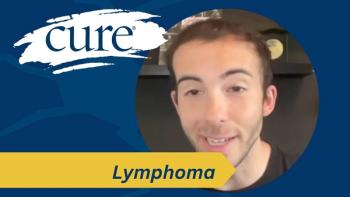With limited treatment options and no cure, brain cancer is one of the science and medical world's hardest nuts to crack. The most common and deadliest form of brain cancer is glioblastoma multiforme, or GBM for short. This particular cancer has for decades resisted the efforts of the best in the biomedical research community, who are always looking for better treatment options for patients. These efforts include the National Institutes of Health's The Cancer Genome Atlas (TCGA) project, which in 2006 chose GBM as the first tumor to sequence and analyze to better understand the disease. The brain tumor community's successful push to make GBM one of the main focuses of the TCGA was due in large part to the unfortunate fact that there has been little progress in the fight against this tumor over the past three decades; a result of the complexity and aggressiveness of this particular form of brain cancer. GBM tumors are highly heterogeneous with multiple subtypes, and often a multitude of different mutations and cell types within a single tumor. In addition, the cancerous cells frequently invade other healthy tissue throughout the brain, further illustrating their aggressive nature. Consequently, survival statistics for this patient population are staggeringly low. And, while the TCGA GBM project netted volumes of important information and data, the big payout for patient care that is desperately needed has yet to materialize.As a long-time strategic adviser to the National Brain Tumor Society, I joined the organization's executive team, program staff and board of directors, along with other strategic, scientific and medical peers to analyze the current landscape and pinpoint why progress was not happening despite this attention. As a result of these discussions, National Brain Tumor Society created the Defeat GBM Research Collaborative earlier this year.Defeat GBM is a strategic research initiative, created as a subsidiary of the National Brain Tumor Society, and aims to double the five-year survival rate of GBM patients in five years. To achieve this goal, the initiative will connect leading brain tumor researchers from top cancer institutions, including MD Anderson Cancer Center, Ludwig Institute for Cancer Research and Memorial Sloan-Kettering Cancer Center, in a full-force effort to significantly impact patients through better collaboration, data sharing and a unique scientific plan designed to speed progress. I was honored to be selected as the scientific director of this initiative to lead a Strategic Scientific Advisory Council (SSAC), comprised of many of the top minds in brain cancer research. Together we will oversee this effort, including charting the direction of Defeat GBM research, reviewing project progress, as well as ensuring investigator teams are working in synergy and achieving key milestones and annual goals. Defeat GBM was built around the idea of creating a new funding and research model for brain cancer, one which breaks the traditional paradigm of funding single research projects with individual goals and independent aims. Utilizing deep-funding, comprehensive and rigorous contracts with partner organizations, and bringing together researchers that already have a history of collaborating together as the core of the initiative, the Defeat GBM construct is coordinated to rapidly move progress through the initial four complementary projects (within the initiative) that span the drug development pipeline from basic discovery science, through to translational research and pre-clinical drug development, all the way to improving clinical trial design.If we succeed, we'll be able to quicken the pace of discovery of the right targets, transfer that knowledge to deliver the right drugs to the right subsets of patients, and reach our goal of improving overall survival rates. In addition, we would have achieved this progress in less time and with less financial burden than historically has been the case for brain cancer research and drug development. Parallel to our Initiative, other exciting efforts combating GBM are happening across the country, which are contributing to the overall knowledge base and field of brain tumor research. For example, a second phase, so-to-speak, of the GBM TCGA project just unveiled its findings this past month (read "The Cancer Genome Atlas exposes more secrets of lethal brain tumor"). The information from this study could provide invaluable information on the genomic alterations that drive GBM tumors and potential targeted therapies. At the same time, exciting efforts are happening in the development of innovative immunotherapies to treat GBM tumors from a number of different researchers and institutions. Defeat GBM is our contribution to the field. And for those of us involved, an effort to create a collective brain to battle this terrible disease in ways that we have not yet been able to do as individual researchers or institutions. The brain tumor community deserves this concentrated, comprehensive effort, as well as a greater hope for better treatments, and one day, a cure.W.K. Alfred Yung is the chair of the department of neuro-oncology, co-director of the Brain Tumor Center, Margaret and Ben Love Chair of Clinical Cancer Care, and professor of Neuro-Oncology and Cancer Biology at The University of Texas MD Anderson Cancer Center. He is also a strategic adviser to the National Brain Tumor Society and the Scientific Director of the Defeat GBM Research Collaborative (a subsidiary of the National Brain Tumor Society), as well as the editor-in-chief of the journal Neuro-Oncology and co-chair of the NCI Brain Malignancy Steering Committee.






